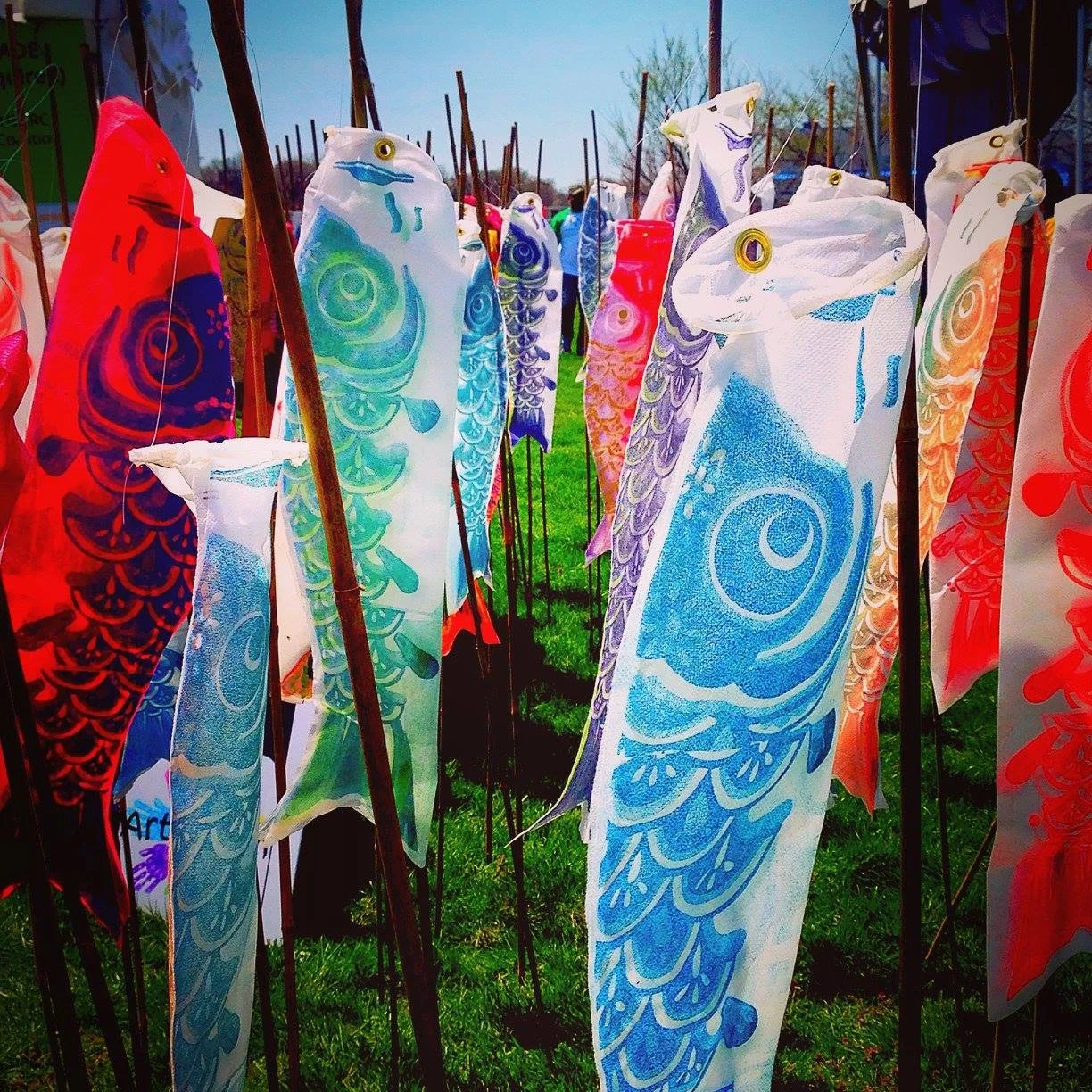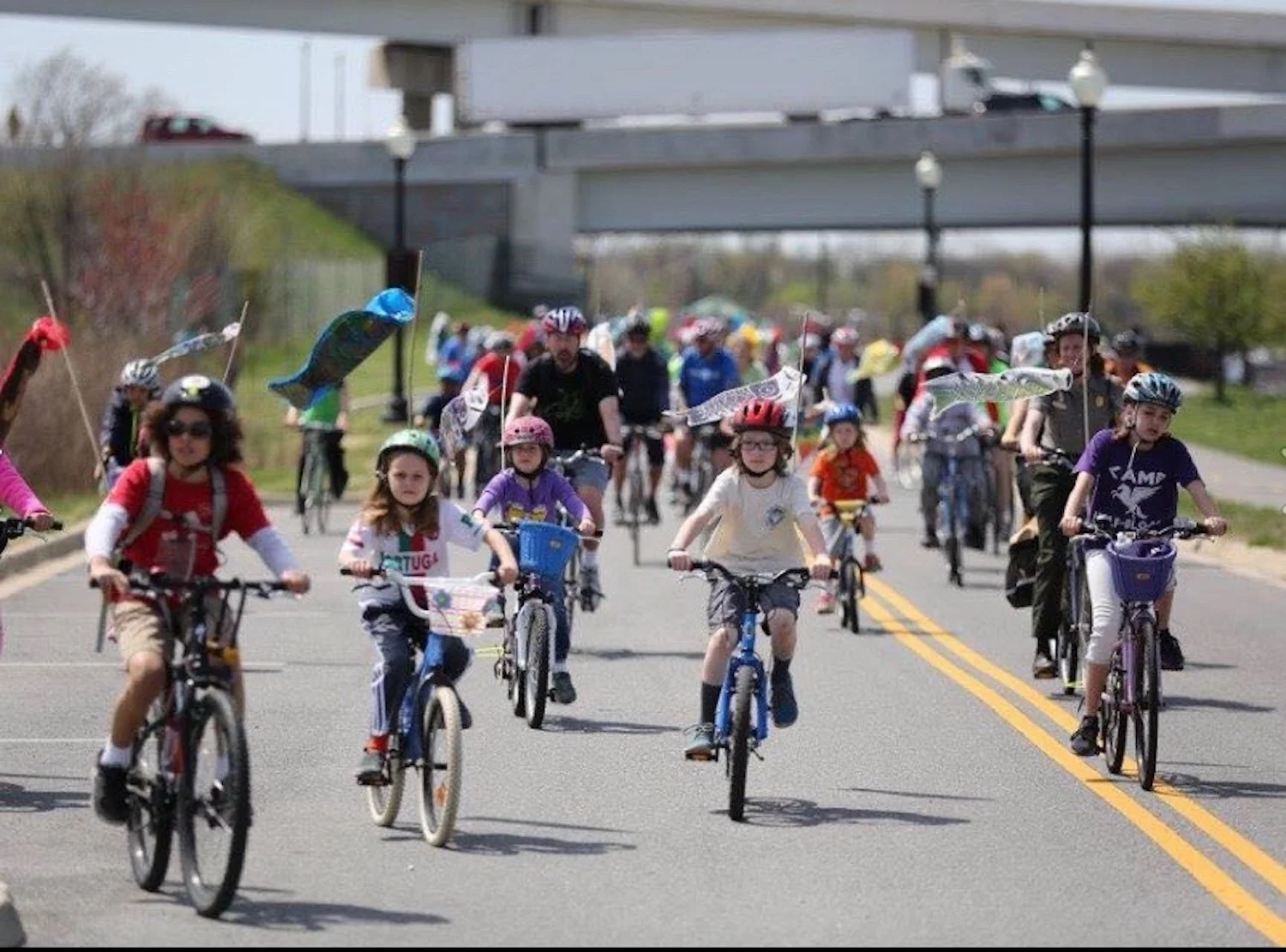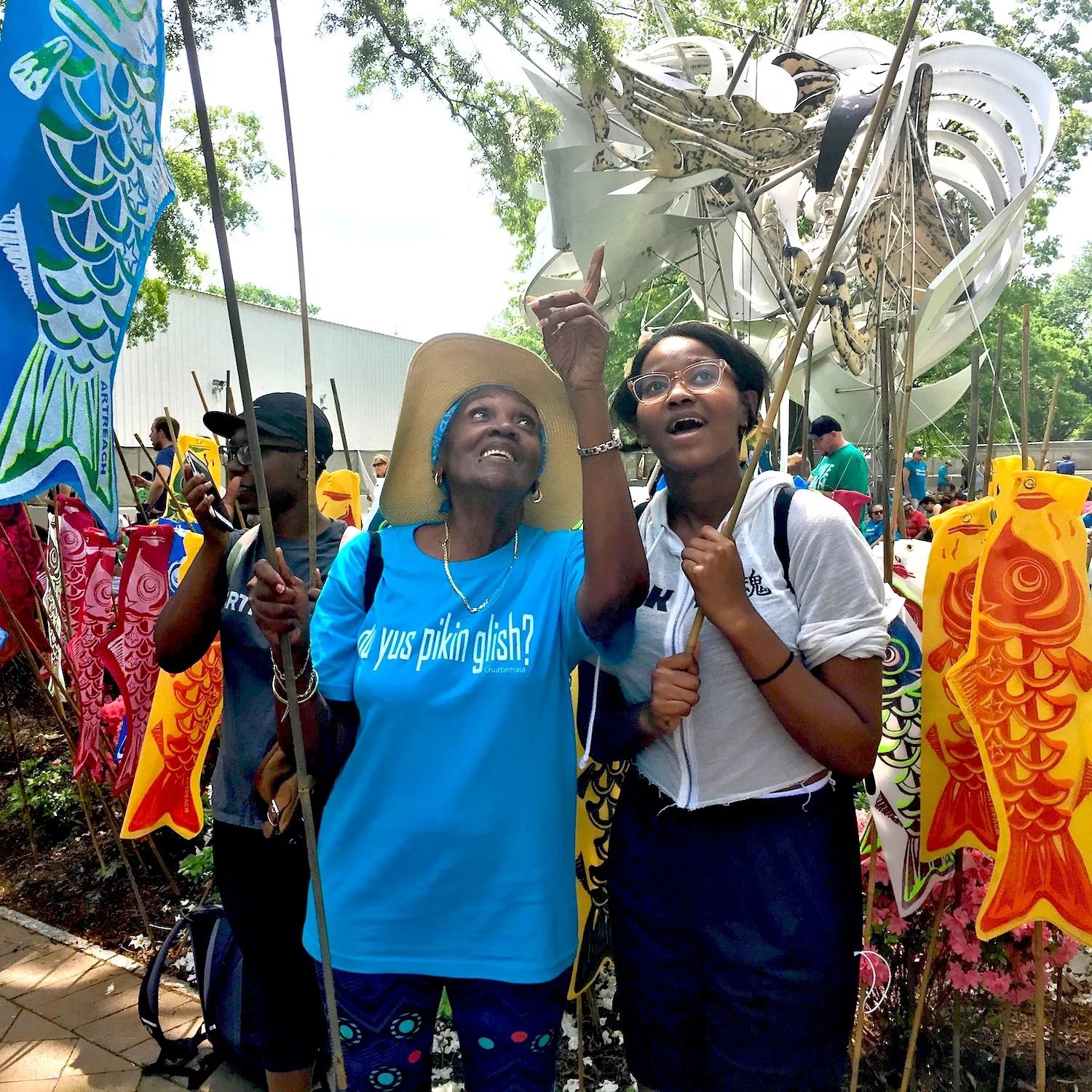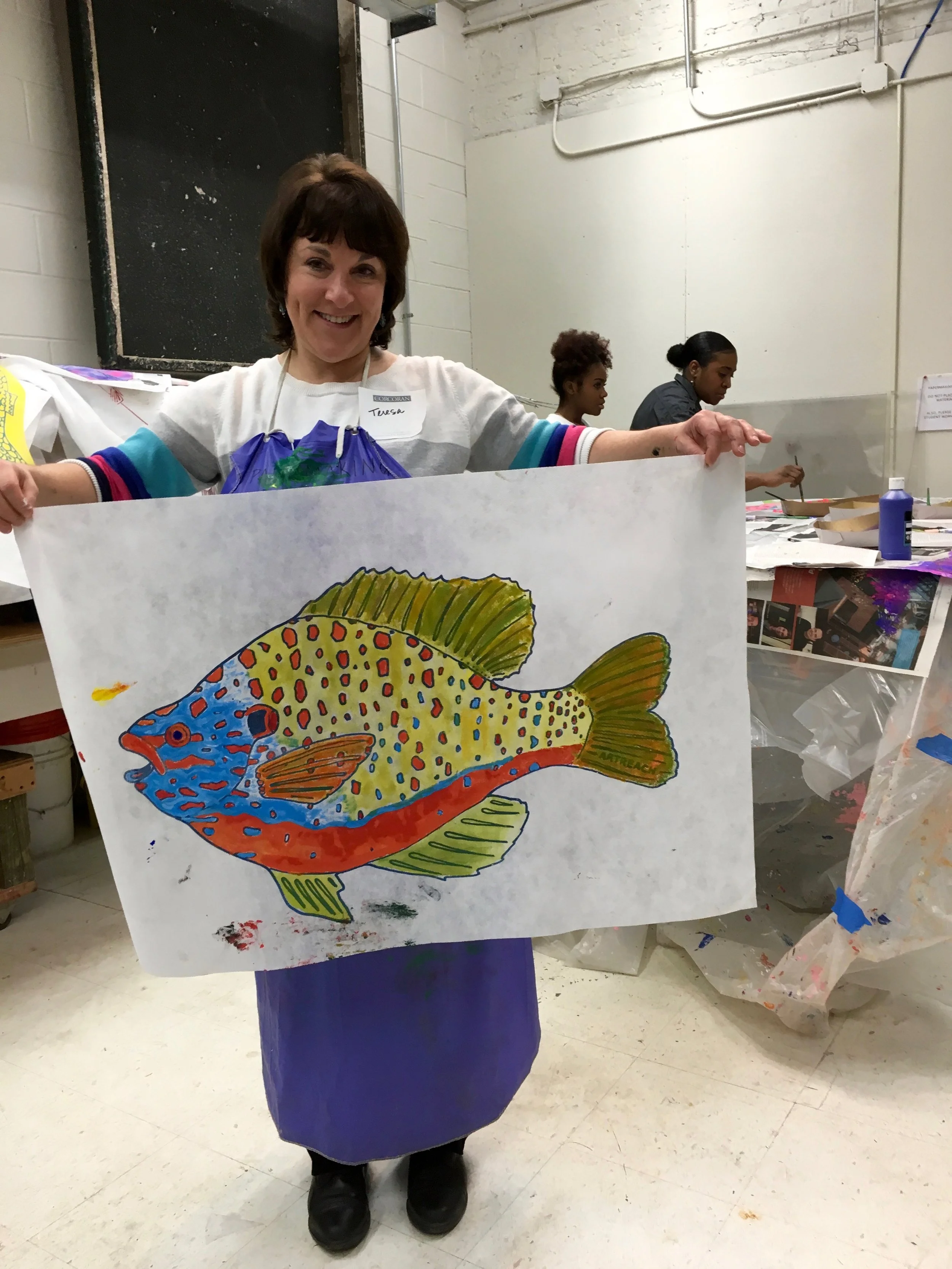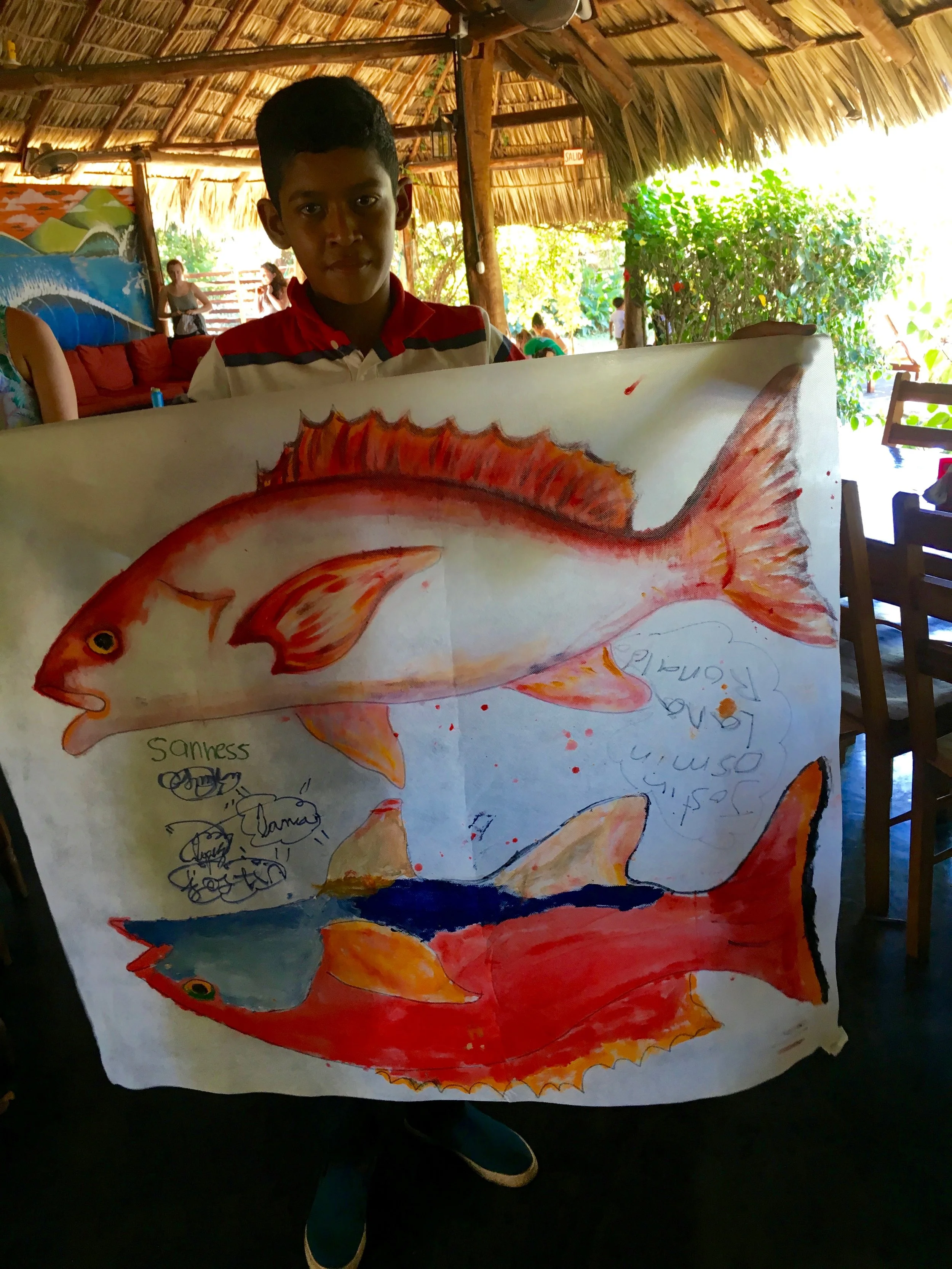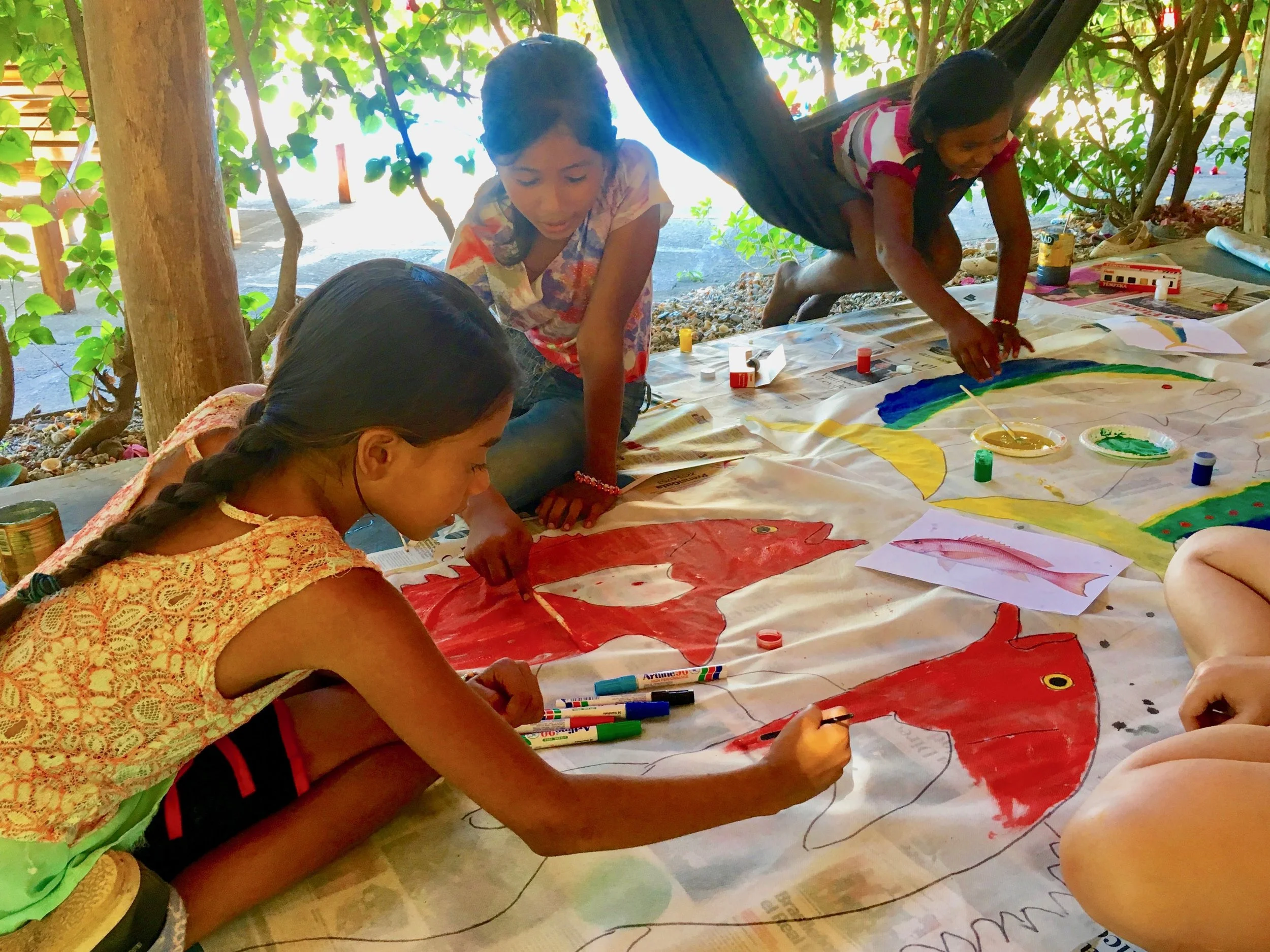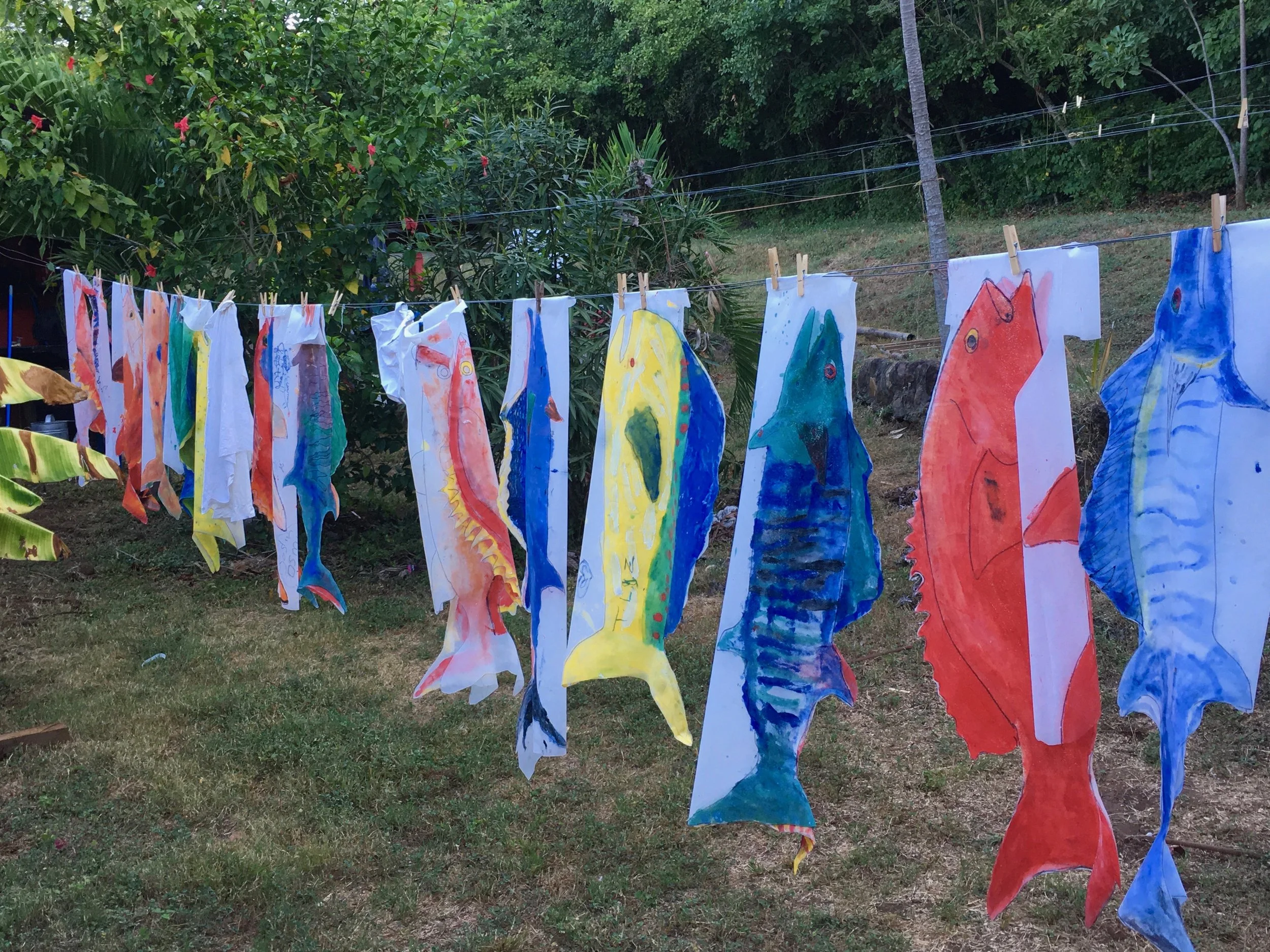Anacostia River Festival
Fish Windsock Bike Parade
A socially engaged printmaking project exploring themes from the Anacostia River watershed.
Working with the National Park Service, Anacostia Watershed Society, Corcoran College Printmaking Department and Washington Area Bike Association, Melissa designed and hosted a series of educational and studio-based workshops in museums, schools, and community centers around DC to learn about watershed health and create native fish windsocks.
The project, held annually for three years, created over four hundred screen printed windsocks depicting native species of the local river. Many of the windsocks were put into motion during the fish bike parade at the first Annual Anacostia River Festival in April.
Anacostia River Festival
Inspired by the Japanese tradition of creating carp-shaped flags known as “Koinobori,” students created fish windsocks representing fish that can be found in the local Anacostia waters, including the Shad, Pumpkinseed and Snakehead fish. With information provided by George Washington University’s Biology department and Anacostia Watershed Society, the workshops gave students the opportunity to learn more about local ecology and history of Washington, DC’s watershed.
Connecting to Urban Waterways
The stories and questions surrounding the fish and their habitats helped create rich and valuable conversations during arts workshops. The educational workshops also helped introduce community members to local river advocates from multiple disciplines. Through partnerships with such environmental organizations as the District Department of Energy and Environment Aquatic Recreation Center (AREC), Earth Conservation Core, and the Anacostia Watershed Society, Melissa was able to provide local youth and families with opportunities to engage in environmental activities and learn about some of the work being done to combat environmental degradation.
Printmaking
Participants, of all ages, designed and created drawings of native and invasive fish.
Each hand drawn design was transferred to a screen through a photo emulsion process. The screens where then utilized to create a series of screen prints to be printed onto recyclable mesh windsock fabric.
Families helped to create the printed windsocks by inking and pulling the prints with a squeegee. Many participants were trying out the screen printing process for the first time.
The Project was designed to:
Inform the public about ecological dynamics and the environmental problems we face
Raise awareness of the role each of us play in sustaining the health of our watersheds
Learn about the living organisms (native and invasive) and finding connections of the river to our community
Stimulate dialogue encouraging long-term conservation to the social and natural environments in which we live
Stimulate, inform, inspire and utilize creativity as a catalyst for social change
Fish Windsock Bike Parade
The project culminated in a fish windsock bike parade where the windsocks were connected to bikes and put into motion at the Anacostia River Festival.
Over 400 handmade windsocks participated in the parade with bicycle groups and individual bikers riding along the Anacostia River in Washington, DC.
ArtReach Fish Windsock Project - Screen printing demonstration - Melissa and Jordan are preparing the fish screens at the GW Corcoran School of Art printmaking studio for a collaborative community project with the 11th Street Bridge Park and the National Park Service.
Fish Windsock Project Abroad
The project continued overseas when Melissa led a group of college students from George Washington University and community members in El Manzano, Nicaragua on a fish windsock workshop.
Despite the language barrier, the community and college student participants collaborated to create depictions of native fish including; Yellowfin Tuna, Striped Marlin, Wahoo, and Tarpon.
The “Schools” of fish windsocks went on display in a local elementary school to beautify the space and serve as an educational tool.
Kohei Urakami, International art student from Japan, designed a unique drawing for the fish windsock project while in the printmaking studio at the Corcoran College of Art and Design.
Known for his delicate drawings and meticulously executed prints, Urakami uses his talents to execute an exploration of the passing of time in nature.
